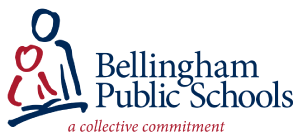Bellingham Public Schools may provide transportation to and from school for a student:
A. Whose residence is beyond the one mile radius from the school to which the student is assigned;
B. Whose walking route to school is hazardous;
C. Those disability prevents him/her from walking or providing for his/her own welfare while walking; or
D. Who has another compelling and legally sufficient reason to receive transportation services. The parent or guardian of a student whose assigned bus stop is beyond the maximum walking distance may receive reimbursement for private transportation at the state mileage reimbursement rate.
At the request of an eligible student, the district may allow the student to transport his or her infant on a school bus or other student transportation vehicle provided by the district. The infant must be transported in a rear-facing child restraint system as defined in the federal motor vehicle safety standards found in 49 C.F.R. § 572.213. If the district denies the student’s request to transport his or her infant by school bus, the district must authorize other arrangements for individual transportation in accordance with RCW 28A.160.030. For purposes of this paragraph, “eligible student” means any student served by the transportation program of the district or compensated for individual transportation arrangements authorized by RCW whose route stop is outside the walk area for a student’s school, except if the student to be transported is disabled under RCW and is either not ambulatory or not capable of protecting his or her own welfare while traveling to or from the school or agency where special education services are provided, in which case no mileage distance restriction applies.
The district’s transportation program will comply in all ways with state law and regulation. Transportation services of the district may include approved bus routes, district-approved field trips, school activities (participants only) and extracurricular activities (rooters).
Routes and Schedules
The superintendent or designee will be responsible for scheduling bus transportation, including the determination of routes and bus stops as well as overseeing the transportation program.
The purpose of bus scheduling and routing is to achieve maximum service with a minimum fleet of buses insofar as this is consistent with rendering safe and reasonably equal service to all students entitled to such service. The superintendent or designee may authorize the use of a district-owned passenger car in lieu of a bus for transporting students to and from school.
In order to operate the transportation system as safely and efficiently as possible, the following factors will be considered in establishing bus routes:
A. Where an alternate route may be considered without sacrifice of efficiency or economy, preference will be given to that route more directly serving the largest number of students;
B. Location of bus stops may be determined by such factors as student safety, economy and efficiency. Students may be required to walk up to one mile from their home to their bus stop provided that the walking route is safe; and
C. School schedules will be adjusted to allow maximum utilization of each bus in the system by alternating elementary and secondary trips.
The district will apply for state transportation apportionment funds and will maintain the records required to obtain such funding.
Emergency Routes and Schedules
The district will develop emergency bus routes and schedules to be used when weather conditions make the usual routes impassable or, in the superintendent’s or designee’s judgment, too hazardous.
If roads are closed to buses but not to private vehicles, the district may continue to operate the instructional programs of the schools without providing bus transportation until the roads are again open to buses.
| Cross References: | Content |
|---|---|
| Legal References: | Content | |||||
|---|---|---|---|---|---|---|
|
| Management Resources: | Content |
|---|---|
